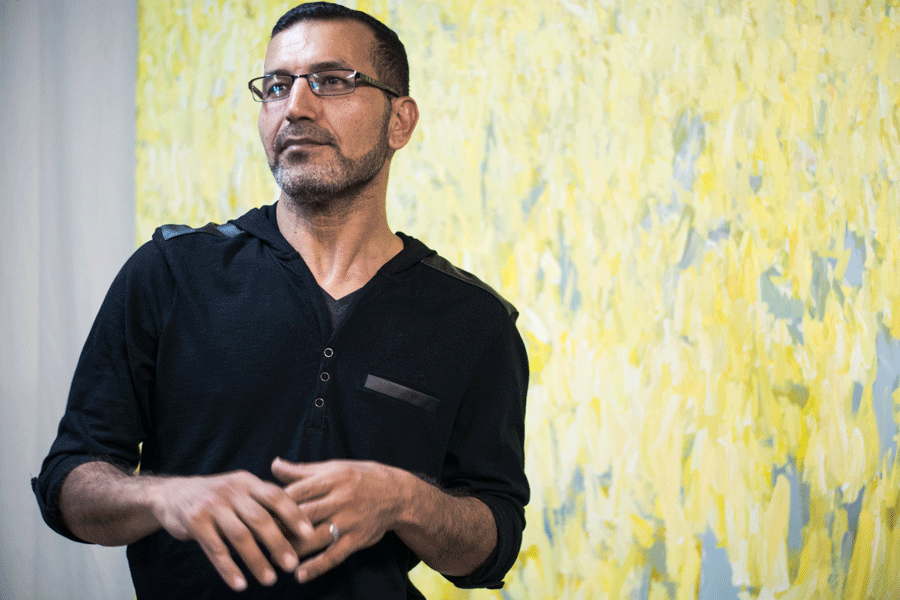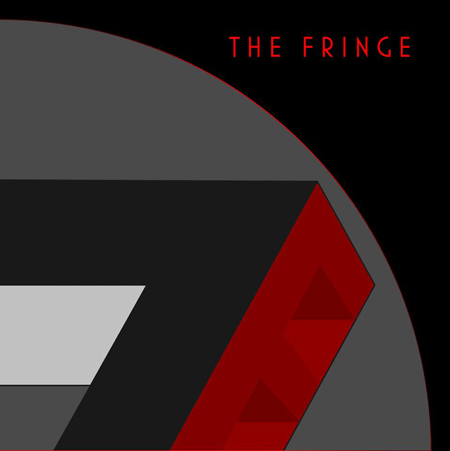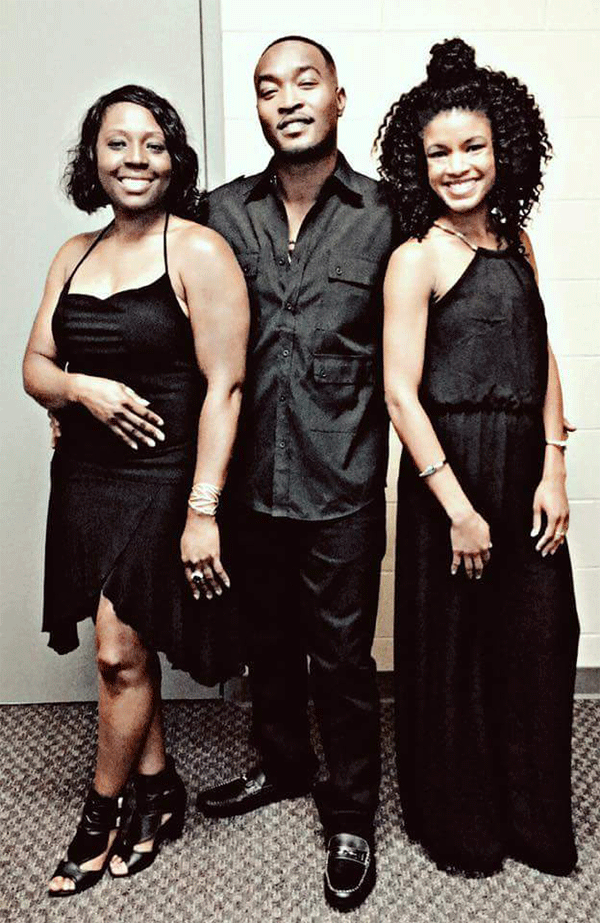Nazar Harran spreads big thoughts across big canvases. His work is bold and shouts for attention. Once compared to Franz Klein, known for explosions of large strokes in black across surfaces that sometimes include raw materials such as newspaper, Harran’s work is similar in confidence but more subdued and refined than the blasts of energy expelled by Klein. Harran’s shapes and strokes appear to be resting, moving slowly, if at all, as if they are taking a respite after waging some sort of battle, or perhaps his work reflects an energy that is ramping up, getting ready to confront the wild emotions that we all harbor.
A transplant from Iraq who now lives in Fort Wayne, Harran is known for work that commands attention. It is large and each piece gives color a venue to show off its ability to express those things that are nearly impossible to put into words.
One of his older pieces, “Union,” presents a mass of glowing orange that could almost be described as narcissistic as it pulls all attention away from the subtle colors that build up a pale, layered background. Even the scramble of black and midnight blue can’t compete with the irregular shape that sits static, waiting to release its potential energy. A viewer might stand by, waiting to see what might happen next, if these colors and shapes were allowed to keep evolving.
Harran is most known for his pieces that present wide expanses of color intercepted and pierced by jagged slashes of hues pulled from the bottom of the value scale. Recently he has taken a turn. His work is moving into a new era, one that illustrates Harran’s unique perspective on our world. He is an artist who looks at the whole, then narrows his sights down to the smallest particles that make up matter and life. He is influenced by molecules, shards of light, bits of conversation and a whirl of brain power that mixes it all up into images only Harran can see until he chooses to pull them out and express his ideas with hand, brush and paint.
“We are all made up of small molecules. Picture those. They have colors. Because they are really tiny we have to put them together to make a picture, like pixels,” Harran explains. “Imagine those pixels, or molecules. They actually have their own identity. They have their own personality, colors. Because we don’t see them, they are very tiny – doesn’t mean they don’t exist. They are there. Our eyes cannot see it physically, so they are not existent to us, but they are there. I am not making a literal representation of these things. I am trying to bring awareness to the fact that they are there.”
While his older paintings are composed of large, commanding shapes, his new pieces are quite different. Harran uses thousands of small marks, each made with careful thought, to represent a whole. His ideas develop in a steady stream, and he is challenged to choose which vision will be given life on a canvas.
A flood of ideas once came to Harran after he spent time observing a willow tree.
“It’s really an amazing tree. It gets really big, yet the branches just go down,” Harran says, illustrating the posture with his body. “Funny, when I discovered we call it weeping willow. We just got that emotion from us, and we put it on the tree.”
The artist is tuned in and fascinated by the practice that people have of projecting our experiences and emotions onto things that are non-human.
He goes on to say about the tree, “If you get near one on a very sunny day, you see where the light escapes between the leaves in a very romantic way, like the light is playing with the tree. I thought, oh my God, that could be anything. That light not only carries through the tree but it is part of the tree. We gave it the name because when we slump down it is like we are sad, but what if that is not so with the tree? I find these big ideas in images or thoughts and I try to show them.”
His experience with the willow tree is illustrated by a new series he calls Falling Gold.
Harran’s newer pieces are made up of small strokes of the brush, yet he still chooses to work with large canvases. He needs room to let color travel all over the surface. He enjoys the interaction he can have with the canvas when size demands that he move his entire body to make a piece.
“Each touch of the brush has its own feeling at that moment. There are thousands of them [and] each has its own meaning … I use big arm movements. My whole body gets involved. I used to sit at an easel, but now, sometimes I don’t use an easel. I just lean them on the wall on top of a couple pieces of wood. I have the colors all around me in bowls, on plates and in buckets. There are brushes everywhere. I move from one thing to another.”
The artist notes other changes from his old style.
“It takes a little longer than the old style. Sometimes with the older style an idea would come to my mind. I would see it and then just put it on the canvas. When I work now, the canvas is just blank white. When I put my first mark, there is the first problem. With paintings you are a problem solver all the time. When you start your first touch, you create your first problem, and you have to fix and solve the whole time. It comes from finding the right color balance, the purpose of that touch.”
Harran names many of his pieces after colors. “Season Silver” is one such piece. It is a canvas covered by a vast plane of marks, mostly white and grey; some recede while others step forward. Pulls of black paint dash down the piece with energy while peeks of yellow ocher hide in the background. It’s as if the work were a flash of motion captured on fast shutter speed.
“When I made those seasons, you may think winter, spring and fall. I also mean that we, people, go through seasons. We are young and we are full of energies and ideas, most likely they are stupid, but you don’t know that. ‘Season Silver’ is like a man or a woman in their fall time. We compare it to the tree when the tree goes through its cycle and is on the decline.
“Silver – people assume that means old. I like the idea of the season that we go through as people. It is when we change. The things we go through, what makes us change? We go through experiences and suddenly we have different opinions … that jump is a very amazing thing. That change, that moment, when we realize that change, it is like a new moment, like we are born new.”
Harran currently shows at galleries in Atlanta, Nashville and Colorado. He hopes to build a relationship with a gallery in Chicago and his solo show, Marks of Intention, will be featured at Jennifer Ford gallery on 3223 Carroll Road through November 15.
 Submit Your Event
Submit Your Event


